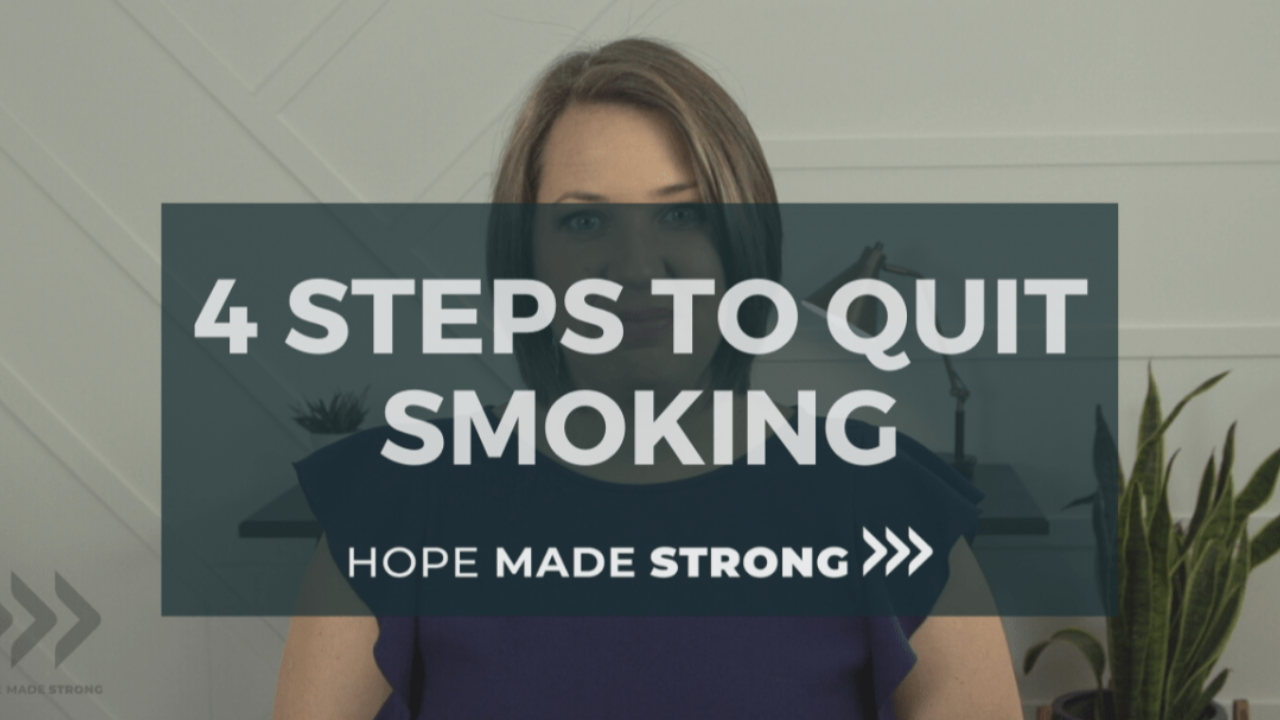4 STEPS TO QUIT SMOKING
Dec 06, 2022
Most people I know want to quit smoking.
That means that an estimated 34 million adults in America have either thought of quitting or tried and failed.
But most people don’t realize that nicotine is just as hard, or even harder, to quit than heroin. So it’s no surprise that this addiction has continued on for many. So here are
4 STRATEGIES ON HOW TO SET YOURSELF UP FOR SUCCESS AND FINALLY QUIT SMOKING.
Recently I heard someone who was wanting to quit smoking calling it a “horrible dirty habit”. They tried to quit in the past and was successful for a time, but always returned. There is so much shame and failure associated with smoking.
So if someone is wanting to quit rather then jumping in and quitting cold turkey, which rarely works. I suggest being more intentional and making a plan.
Just like many substances, Nicotine releases dopamine in the brain. This is a feel-good drug that makes it pleasurable to use. So when you stop smoking, your dopamine levels drop which causes you to feel anxious or depressed.
Nicotine also acts as a stimulant, so it helps people concentrate. At the begging stages of quicking people can have trouble focusing.
Knowing the benefits you get from smoking is important. Because then you begin to see a pattern of use which is the 1st strategy to set yourself for success.
1. RECORD YOUR USE AND WATCH FOR PATTERNS
Get a journal, make a note in your phone or put it in your calendar but I encourage you to record when, why and how much you smoke. Note if you smoke 2 in the morning to start your day. Or if you smoke in the car on your commute home or to decompress your way home.
This gives you information to make a plan and be intentional.
2. YOUR NEXT STEP IS TO REFLECT BACK ON WHAT HAS WORKED AND WHAT HASN’T.
Think back to a time that you have tried to quit. What was helpful. Was it the patch, the gum, having an accountability partner, changing habits.
Even if this is your first time trying to quit there have been moments where you have successfully put off smoking for a few hours. What was it that helped you during that time? What is social pressure, was it gum, distraction? Write out what helped because you are going to use these in your plan.
Just as it’s helpful to look at what worked, it’s also helpful to look at what has n’t worked, or what has drew you back to smoking. The common reasons are stress, depression and boredom. By knowing what makes it difficult to quit you can be intentional and plan in
3. THE THIRD STRATEGY IS USING A CONCEPT CALLED HARM REDUCTION.
Harm reduction is to reduce the harm to the individual and to move towards quitting.
Quitting cold turkey may be what you want. But your body has been dependant on nicotine for so long that this would be shocking and very hard to do. That is why most people who quit cold turkey have a quick return to the habit.
By using harm reduction and cutting down on the number of cigarettes smoked each day it’s using a strategy that allows you to have small success early on and weaning your body off the need for nicotine in a more manageable way.
Now, this is where you begin to use the information you gathered in the first step.
Get out your journal and see where it would be easiest to begin cutting back. The goal is to reduce the harm and to get some quick wins to build your confidence. If you smoke 12 cigarettes a day, Look at your journal and see how you can cut that to 10 a day for a week. Then cut it back to 8 and so on. Leave the most difficult one (often first thing in the morning) until last.
4. THE FOURTH AND FINAL STEP IS BUILDING A PLAN FOR SUCCESS.
Looking at your past successes and set-backs, start to build a plan to incorporate what has helped at the times that usually set you back.
So if the biggest trigger for you was stress at work, while you are cutting back build in habits to help deal with stress.
If in the past you returned to smoking after a relationship conflict make a plan ahead of time of what you’re going to do when conflict happens again. (go for a walk)
By looking forward and making an intentional plan for when/if you have set-back then you are less likely to be surprised and return to the habit of smoking.
The process of quitting smoking has been described as like being on a roller coaster. The nervous anticipation not knowing what is coming on the other side of the drop and days of ups and downs. There will be moments of not feeling well and being irritable and having cravings.
The first few days are often intense, then it might level off and come back again.
Be patient with yourself, and be kind to yourself. This is a difficult but do-able journey.
You can do this, but it takes having a plan and being prepared.

